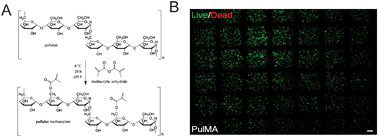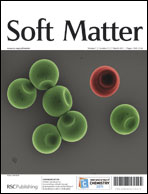Cell-laden microengineered pullulan methacrylate hydrogels promote cell proliferation and 3D cluster formation
Abstract
The ability to encapsulate cells in three-dimensional (3D) environments is potentially of benefit for tissue engineering and regenerative medicine. In this paper, we introduce pullulan methacrylate (PulMA) as a promising hydrogel platform for creating cell-laden microscale tissues. The hydration and mechanical properties of PulMA were demonstrated to be tunable through modulation of the degree of methacrylation and gel concentration. Cells encapsulated in PulMA exhibited excellent viability. Interestingly, while cells did not elongate in PulMA hydrogels, cells proliferated and organized into clusters, the size of which could be controlled by the hydrogel composition. By


 Please wait while we load your content...
Please wait while we load your content...